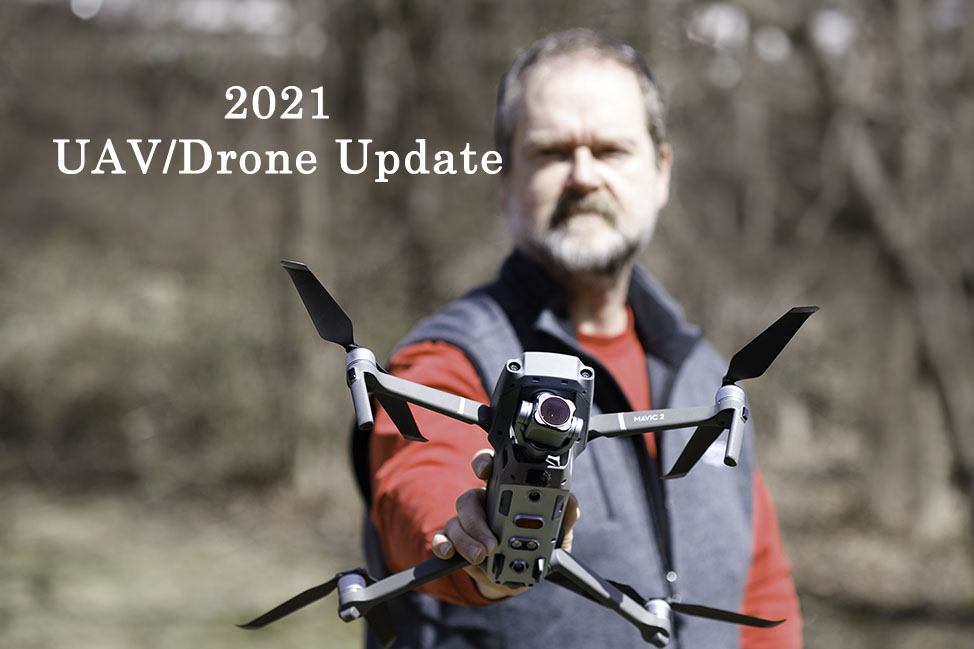
If you’re using an aerial drone for photo or video (or anything else), the FAA has released new rules for drone pilots. These changes do not take effect immediately but are very significant.
Flying over people
FAA part 107.39 has prohibited flying a drone over people (beyond flight operations staff participating with the pilot in charge) unless the pilot obtains a formal waiver from the FAA. As a pre-requisite, the applicant must be a certified remote drone pilot in accord with FAA part 107.
Beginning in 2023, certified Part-107 pilots will be allowed to fly a drone over people and a waiver will not be required. However, there is no change for recreational pilots (not certified); recreational pilots are not allowed to fly over people and no waiver can be obtained.
This also applies to flying over moving motor-vehicle traffic.
Specific restrictions require some form of protective guard around spinning propeller blades that might lacerate or otherwise injure a person on contact.
FAA Executive Summary, Dec.28, 2020: https://www.faa.gov/news/media/attachments/OOP_Executive_Summary.pdf
Flying at night
Currently, FAA part 107.26 prohibits flying a drone at night unless the pilot in charge obtains a formal waiver. As a pre-requisite, the applicant must be a certified remote drone pilot in accord with FAA part 107 and the drone must be equipped with particular lighting.
Beginning April 21st, 2021, certified pilots will no longer be required to obtain a waiver … if knowledge of night operations has been demonstrated via FAA drone pilot exam. The certification exam (to become a Part 107 Certified drone pilot) will be modified to include questions about night operations.
Remote ID
“Remote ID” is sometimes referred to as digital license plates for drones. Beginning April 2022, all new drones will be required to include Remote ID. And beginning in 2023, all drone flights (using any drone, old or new) must broadcast Remote ID. Small drones that weigh less than 0.55 drones are exempt from these new requirements.
Remote ID is not entirely analogous to automobile license plates. Remote ID broadcasts (via either Wi-Fi or Bluetooth) the drone’s unique ID, the current location of the drone, the location of the remote control (location of the pilot), and an emergency indicator (e.g. low battery). Many people are concerned that broadcasting the location of the pilot could provide an open door to thieves (a drone may be considered an item of value) and to people who simply hate drones and wish to harass the pilot.
If you already own a drone – or you purchase a new drone in 2021 – and it does not include Remote ID, you will be able to purchase an add-on device that fulfills Remote ID requirements. This add-on device is sometimes referred to as a beacon. The cost should be $50 or less. There is a slight difference regarding the specific information that is broadcast. Because a beacon cannot track the location of the pilot, it will broadcast the location from which the drone was launched. If the pilot then walks away from the launch point, the beacon does not have information about the pilot’s location.
If a drone has built-in Remote ID, possibly it may refuse to launch if Remote ID is not operational. I don’t think we know that yet.
Remote ID for drones is similar to ADS-B for manned aircraft. In general, drones will not be allowed to broadcast ADS-B nor ATC; this is apparently what airplane and helicopter pilots want.
Remote ID, FAA Executive Summary, Dec.28, 2020: https://www.faa.gov/news/media/attachments/RemoteID_Executive_Summary.pdf
Recurring Pilot Test
To maintain certification, the FAA has required remote pilots to pass a recurrent exam every two years. That exam has been conducted in-person under watch of an authorized proctor. However, this is being replaced by an on-line recurrent exam and a fee will no longer be charged to take the recurrent exam.
The official timeline called for online testing to be available March 16, 2021 but that did not happen. The revised timeline says it should be available today, April 6, 2021.
The new online exam will include questions about Remote ID and night operations. This presumably includes such topics as diminished depth perception, lighting requirements, etc.